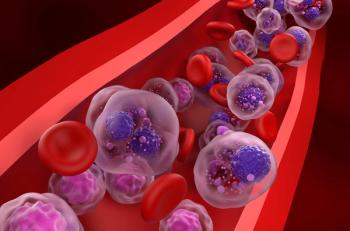
Oncology Specialty Pharmacy Teams Help Ease Financial Burden for Patients
An analysis of a quality improvement project at an oncology specialty pharmacy showed that pharmacist interventions can reduce financial toxicity for patients.
Oncology specialty pharmacy teams play an important role in reducing financial toxicity for patients and ensuring timely access to cancer therapies through financial assistance programs, according to a study published in the Journal of Managed Care & Specialty Pharmacy.
It has been well established that cancer medications are costly and often induce a financial burden for patients. With increasing therapeutic advancements, more patients are living longer and require long-term oral therapies and supportive care management.
Further, there are often significant barriers to access, which can include obtaining prior authorization, lack of time and familiarity, and cost. These often have a negative impact on patients, sometimes resulting in treatment delays and care disruption that can affect outcomes. A previous study found that patient out-of-pocket costs between $100 and $500 were associated with a 32% therapy abandonment rate, the study authors wrote. As shown by this analysis, oncology specialty pharmacy teams can offer ongoing support by enrolling patients in financial assistance programs.
Using prescription claims from January 2017 to June 2017, the current study evaluated patient out-of-pocket costs after enrollment in manufacturer patient assistance programs (PAPs), co-pay cards, and foundation grants through a quality improvement project at an oncology specialty pharmacy at the University of Chicago Medicine (UCM).
The UCM Specialty Pharmacy, which implemented its oncology specialty services in 2016, is integrated into the health system and supported by 3 pharmacists and 2 ambulatory medication access coordinators. The pharmacists are integrated into the outpatient clinics and serve as an extension of the provider team, performing services such as clinical review for efficacy, medication and disease state education, patient adherence management, consulting with physicians, and providing access to care on a 24/7 basis through a specialty pharmacist on-call program.
In total, there were 233 patients who filled at least 1 specialty pharmacy prescription at UCM Specialty Pharmacy. Of these patients, 75 were enrolled in financial assistance. Over the 6-month period, the total patient cost savings was $314,857, according to the study. Financial assistance was most frequently used for the following medications: peg-filgrastim, dasatinib, abiraterone, filgrastim and filgrastim-sndz, palbociclib, venetoclax, and ruxolitinib.
The analysis looked at 3 interventions: manufacturer PAPs, co-pay cards, and foundation grants. The findings showed that the cost savings of each intervention ranged from $5 to $13,138 for all of the patients who received financial assistance. Additionally, the average days from date of insurance approval to date of financial grant approval was 1.2, according to the study.
“This quality improvement project demonstrates how specialty pharmacists and pharmacy technicians integrated within a health system can perform benefits investigations, assess patient out-of-pocket responsibility, and enroll patients in such programs to alleviate the high cost burden of [oral anticancer medications] and prevent therapy abandonment,” the authors wrote.
Reference
Farano JL, Kandah HM. Targeting financial toxicity in oncology specialty pharmacy at a large tertiary academic medical center. Journal of Managed Care & Specialty Pharmacy. 2019.
Newsletter
Stay informed on drug updates, treatment guidelines, and pharmacy practice trends—subscribe to Pharmacy Times for weekly clinical insights.






































































































































































































